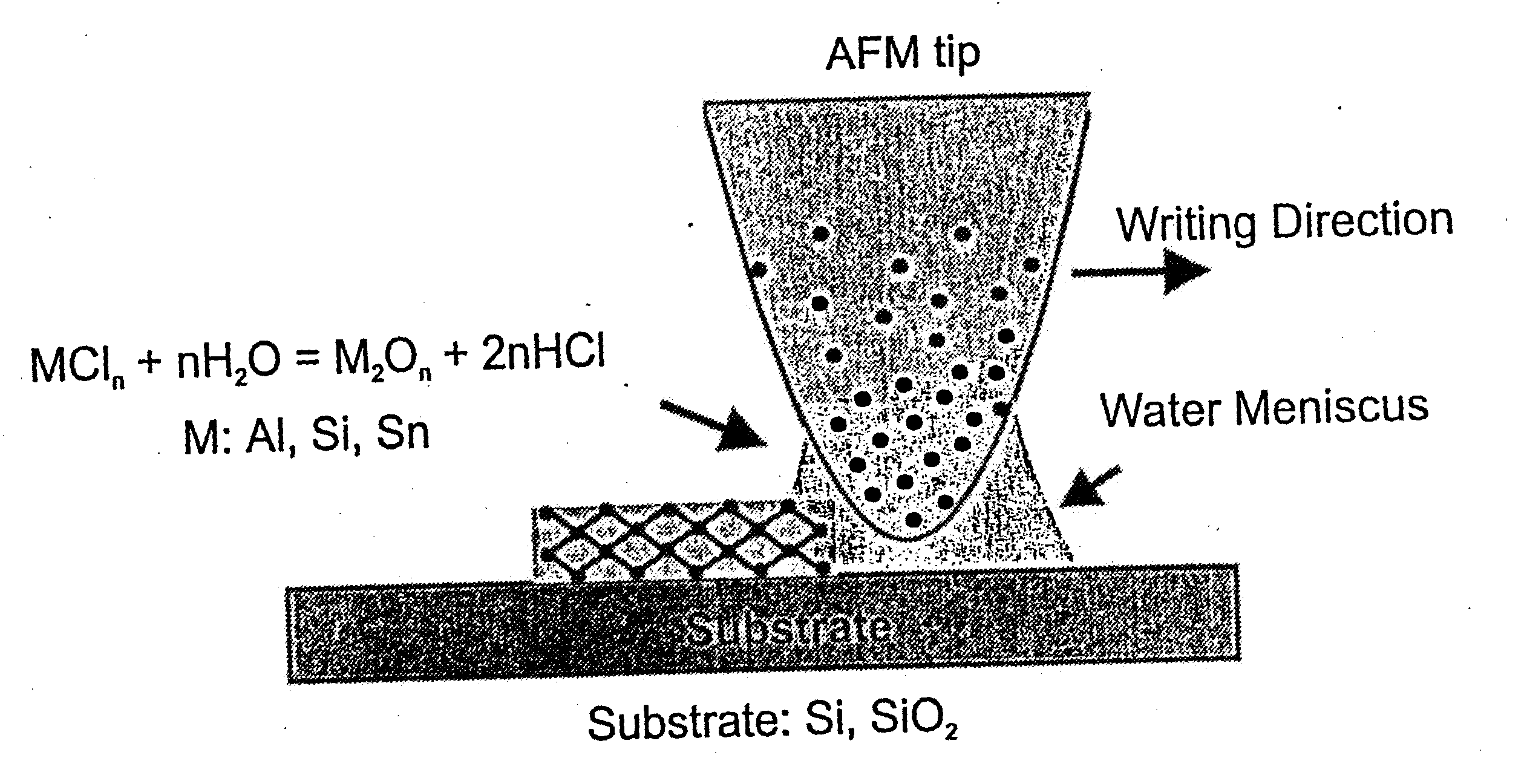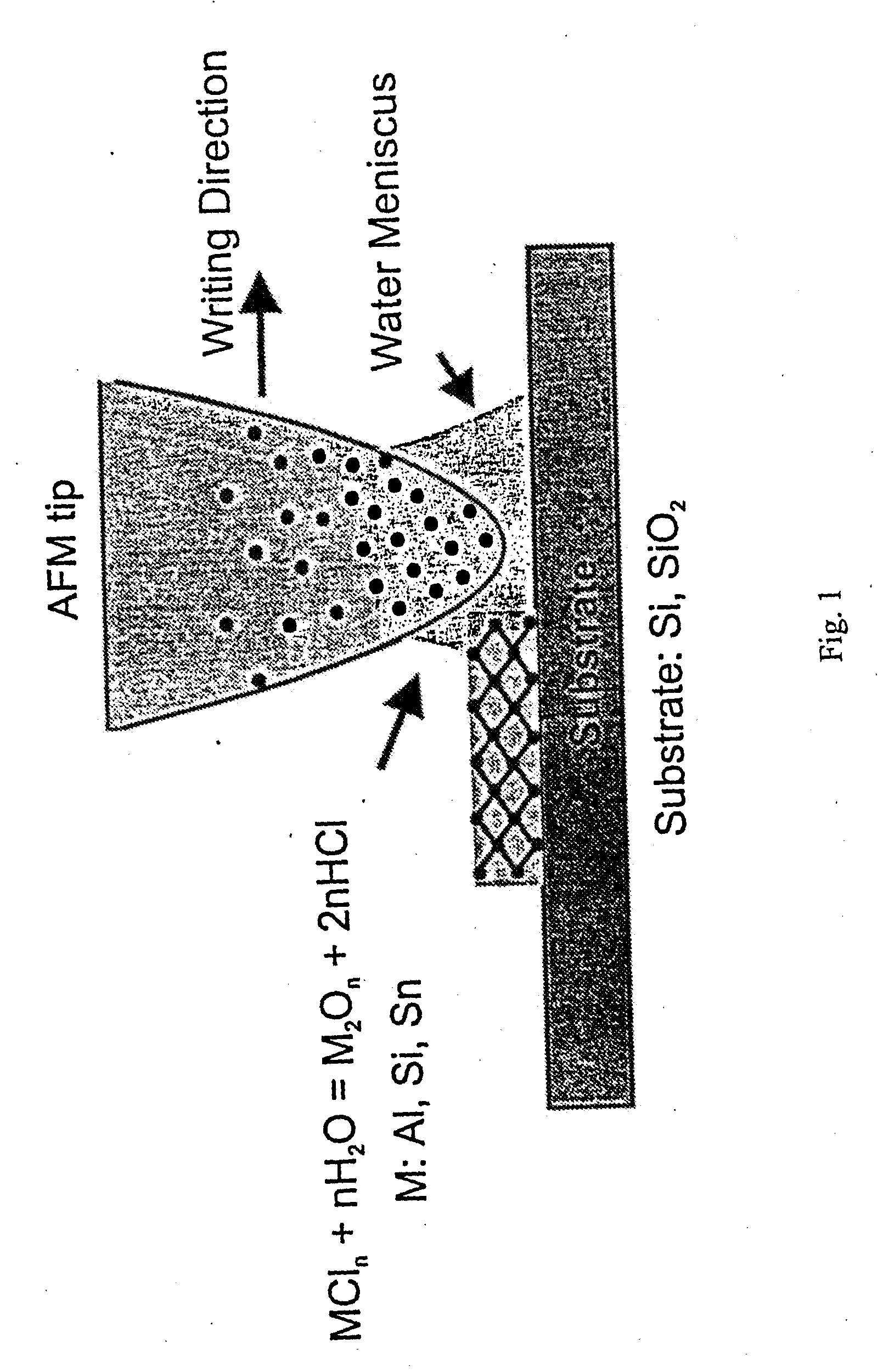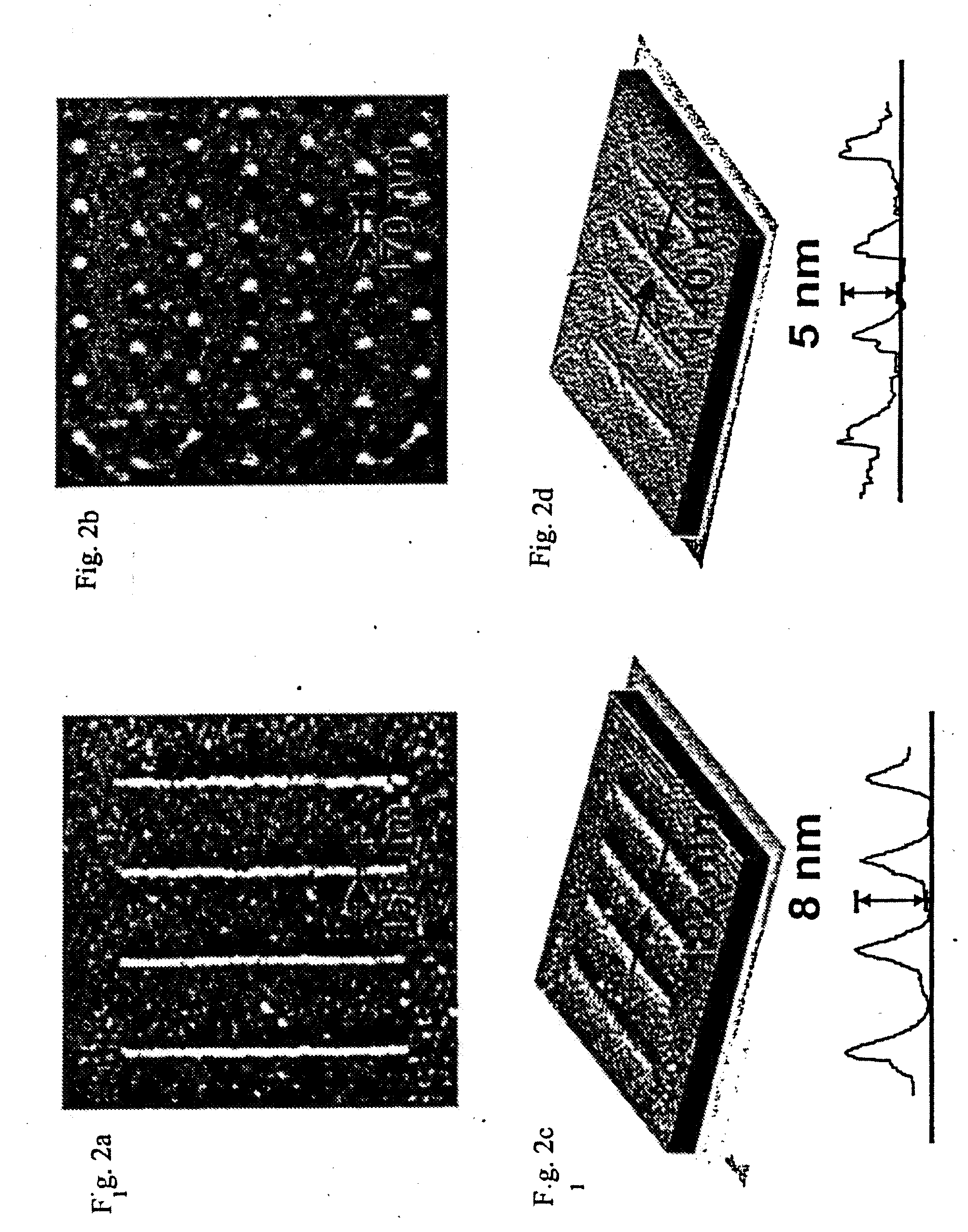Patterning of solid state features by direct write nanolithographic printing
a nanolithographic printing and solid state feature technology, applied in the field of direct write nanolithographic printing, can solve the problems of short circuit, large problems of the prior art lithographic method for making nanoscale solid state features that are generally limited to scales larger, and can generate significant problems in the miniaturization of electronic and optical devices, etc., to achieve fast patterning by dpn printing, large surface area, and low cost
- Summary
- Abstract
- Description
- Claims
- Application Information
AI Technical Summary
Benefits of technology
Problems solved by technology
Method used
Image
Examples
working examples
Experimental
[0083] A ThermoMicroscopes CP AFM and conventional silicon nitride micro-cantilevers (force constant of 0.05 N / m) were used for all patterning experiments. In each experiment, the tip was coated by dipping it into the as-prepared sols at room temperature for 20 seconds. All patterning experiments were conducted under ambient conditions without rigorous control over humidity (˜40%) and temperature (˜20° C.) with a tip-surface contact force of 0.5 nN. To minimize the piezo tube drift, a 90 μM scanner with closed loop scan control was used for all patterning experiments. Subsequent imaging of the generated patterns was done with the ink-coated tip under conditions identical to those used for patterning but at a higher scan rate (6 Hz).
[0084] In a typical experiment, an inorganic precursor solution (sol) was prepared by dissolving 1 g of the block copolymer poly (ethyleneoxide)-b-poly (propyleneoxide)-b-poly (ethyleneoxide), (EO20PO70EO20) (Pluronic P-123, BASF) in 10 g of...
examples 1 and 2
[0085] Dots, lines and complex patterns comprised of tin-oxide and aluminum oxide have been generated on silicon and silicon oxide (>600 nm oxidation layer) substrates, as shown in FIG. 2. For example, 155 nm wide parallel lines made of tin-oxide have been constructed on SiO2 by moving a tip coated with the composite ink (SnCl4 and P-123) across the substrate (0.2 μm / sec). Similarly, dots consisting of Al2O3 were generated on a Si substrate using a tip coated with (AlCl3 and P-123) by successively bringing the tip in contact with substrate for 1 s / dot intervals. These structures maintain their shapes even after repeated imaging (5 times) and are indefinitely stable (>1 month) under ambient conditions.
example 3
[0086] A Si sol (comprised of SiCl4 and P-123) was patterned onto a silicon oxide substrate in the form of parallel lines. The composition of the lines is expected to be a mixture of SiOx and the polymer. When heated in air at 400° C. for 2 hour, the copolymer surfactant is expected to combust leaving a SiO2 nanostructure. Consistent with this hypothesis, an AFM image collected from the same area post heating indicated that the pattern height decreases from 8 nm to 5 nm, FIGS. 2c and 2d.
PUM
| Property | Measurement | Unit |
|---|---|---|
| speed | aaaaa | aaaaa |
| holding time | aaaaa | aaaaa |
| temperature | aaaaa | aaaaa |
Abstract
Description
Claims
Application Information
 Login to View More
Login to View More - R&D
- Intellectual Property
- Life Sciences
- Materials
- Tech Scout
- Unparalleled Data Quality
- Higher Quality Content
- 60% Fewer Hallucinations
Browse by: Latest US Patents, China's latest patents, Technical Efficacy Thesaurus, Application Domain, Technology Topic, Popular Technical Reports.
© 2025 PatSnap. All rights reserved.Legal|Privacy policy|Modern Slavery Act Transparency Statement|Sitemap|About US| Contact US: help@patsnap.com



